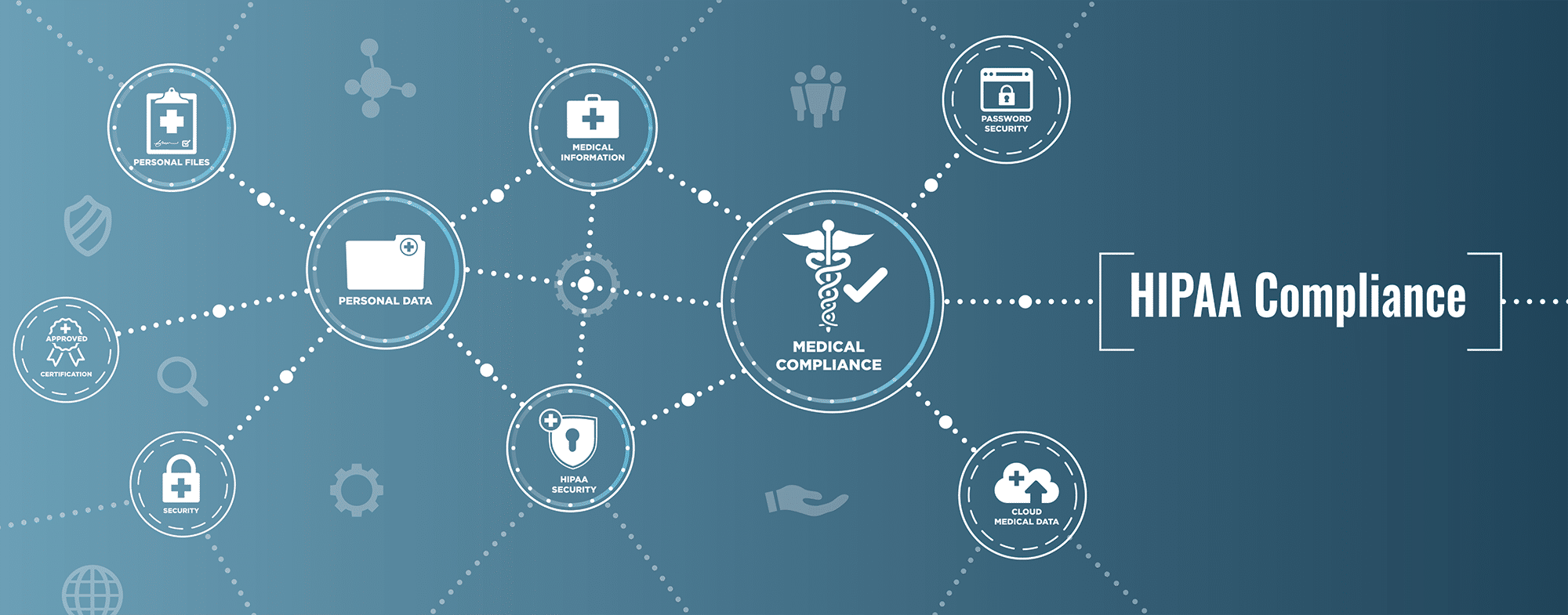We live in a digital-first world today, where small and large organizations rely on the internet to conduct business. Most companies turn to digital solutions not only for selling products and services, but also utilize these technologies for internal management procedures like storage of customer data, employee information, future projects, and other confidential information. As we read about so much in the news these days, data center or main server breaches can result in these data files being leaked and can be incredibly costly. Some sources report that on average, corporations suffer a loss of around $4.35 billion in these events.
Cybercriminals are real and their activities are accelerating each month. According to one report, 93% of corporate networks are vulnerable to the activities of cybercriminals. To ensure the efficacy of your corporate network and software products, it is important to regularly test its integrity. This process is known as penetration testing and is an increasingly valuable tool in securing the digital assets of a company. This article takes a closer look at what penetration testing is, why it is so important, and what steps companies should take to implement a testing protocol.
Overview Of Penetration Testing
Penetration testing is a technique, often referred to as a “pen test,” that organizations use as a means of determining the current security level of two areas:
- Corporate On Premise and/or Remote Networks
AND - For SaaS Based Organizations – DevOps Environment and Software Product.
The primary idea behind penetration testing for networks and software is to determine whether there are any specific vulnerabilities within a company’s network, DevOps environment, or software source code. When these tests identify such vulnerabilities, they provide IT, DevOps, and Cybersecurity teams with an opportunity to effectively improve security gaps throughout the entire network and software source code.
The vulnerabilities identified are areas where the security of a network or software product source code is lacking and often the specific elements that cybercriminals will identify and target during a cyberattack. Failure to identify such vulnerabilities puts a company’s confidential data and assets at risk.
Many people consider penetration testing as a preventative measure. Due to the significant number of elements making up a network and complex software stacks, it’s hard to manually determine where vulnerabilities exist. When cybercriminals find a vulnerability and breach the network or application, it is already too late. These breaches can cause data leakage and loss, and eventually cost the company a large sum throughout the recovery phase. If a vulnerability is detected during penetration testing, it can be patched up before cybercriminals can find and take note of it.
Tip: Be proactive and schedule a pen test before your customer asks you for a recent report or asks you to fill out a security questionnaire. We have seen a large increase in the number of requests for Pen Test Reports to be generated to ensure the Software Solution in use is free from vulnerabilities and that the organization’s network is operating securely.
How To Implement Penetration Testing – Networks & Software Applications
Penetration testing is effective, but only if the process is carefully planned and implemented. While there are different methods of penetration testing that companies rely on, there are still a few key steps that the security team should follow. By having a thorough understanding of how to implement penetration testing, the efficacy can be considerably improved. Additionally, this can also help the company limit the costs involved and produce better results in terms of identifying vulnerabilities.
The Planning Phase
As with any type of new procedure, planning plays a significantly important role for penetration testing. By setting up a comprehensive plan, the company knows exactly what they expect from the testing procedure. This also helps the security team define specific goals and it ensures that the tests are optimized according to the network or software application.
In addition to defining specific goals, companies should focus on obtaining a range of data points throughout the planning phase. This includes details regarding the network that they use, the mail servers throughout the organization, any domains that are used – both internally and externally, software architecture and DevOps environment, and any external software libraries used. These details are valuable in the process of identifying specific areas where vulnerabilities may exist.
The Testing Phase
Once the company has a thorough plan to work from, the next step is to conduct the testing procedures. This is where internet security experts come into the picture. There are individuals who specifically focus on trying to penetrate the security system of a network and the application security experience to hack code. In turn, this gives them the ability to effectively understand whether there are any security vulnerabilities that exist.
There are three types of testing that can be done:
White Box: Attackers have unlimited access to the tested systems including the source code and the documentation thereof.
Grey Box: Attackers have less access to the tested systems and, usually, they do not have access to the source code.
Black box: Attackers have no technical information about the targeted systems and generally, only have a company name and expected outcomes of the test.
Of these, a hybrid of white box and grey box penetration testing typically provides the most comprehensive security review in a shorter period of time.
In contrast, black-box penetration testing is closest to a real-life scenario because attackers often do not have access to or in-depth knowledge of the organization’s systems.
Once a testing type is selected, we then proceed to testing our two target types:
- Networks:
For Network testing, testers attempt to gain access to certain areas of a company’s network either by the information provided or obtained via network testing tools (NMAP, WireShark, etc).
- Software:
Similar to Network Testing, the first step to perform a software or application pen test is to identify url targets and the necessary information (credentials, etc) to successfully gain access. Tools such as ZAP are commonly used as an open source solution.
If the tester identifies a specific vulnerability, the next step is to leverage that opening to try to exploit the system. At this time, the specific procedure that follows largely depends on the area where the tester gained access. The tester may attempt to breach and gain access to confidential data. In some cases, they may attempt to escalate certain privileges. These are all techniques that cybercriminals use regularly, which is why it is important for testers to make different types of attempts during this phase.
If access is obtained, then the tester will also enter a maintenance phase. The purpose here is to determine how long they can maintain access to the areas where vulnerabilities were identified. The longer a cybercriminal has access to a vulnerable spot in a network or source code, the more harm they can do.
Analyzing The Results
The final step of the process is to analyze the results obtained during the penetration test. Here, all the testers put their data together and work to create a complete report.
During this phase, the results are discussed, and recommended solutions are drafted. CyberSecurity experts look at each of the identified vulnerabilities separately and develop specific solutions for each of the system’s vulnerabilities. It is also important to discuss what the testers were able to accomplish once they gained access to the network. This allows a countermeasure to be developed and implemented. In turn, the company can now focus on fixing these vulnerabilities to prevent future cybersecurity issues with their internal networks.
What Are The Costs Involved With Penetration Testing?
A penetration test often involves an advanced range of programming and breaching techniques. Due to the complexity involved, it is important for companies to understand the costs involved in the procedure and the reality is, the costs vary widely.
When the budget is developed, there are a large number of factors that come into play. One of the most important elements that come into play is the overall complexity of the penetration testing procedure and target. Companies with limited security requirements may only want to implement a basic penetration test. The average cost range of these smaller testing procedures is approximately $2,500 to $5,000. Organizations with lengthy security requirements and more complex targets will require advanced testing systems, which can easily cost over $20,000.
How Frequently Should You Perform Penetration Testing?
Cybercriminals are smart and continually learning new ways to penetrate security systems and software solutions. This means new system and code vulnerabilities may arise over time. While the current penetration test may not show any vulnerabilities, this may not be true in the near future. This is why companies have to ensure they implement penetration testing on a regular basis.
The ideal interval for these testing procedures really depends on the type of business, industry, and the specific data stored. It is important to monitor the latest updates and developments in the cybersecurity world. This can give a business a good idea about when they should consider implementing another penetration test.
That said, a good rule-of-thumb is to perform penetration testing once every 12 months. Some companies may choose to test more frequently, especially if they have highly confidential data that requires extra protection.
Conclusion
Penetration testing is a highly effective technique that helps companies better understand the security of their internal networks and software solutions. The testing procedure is relatively affordable and can save an organization Millions in the long run. There are different methods that can be used, but with cybercriminals constantly improving their infiltration techniques, it is important to perform penetration testing on a regular basis.






